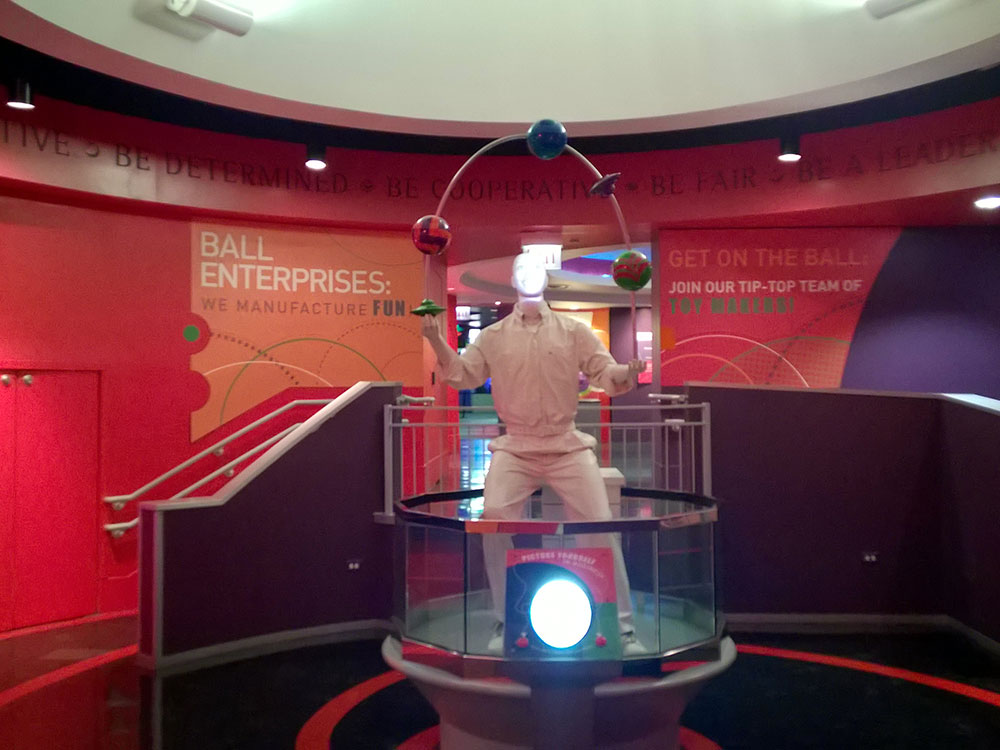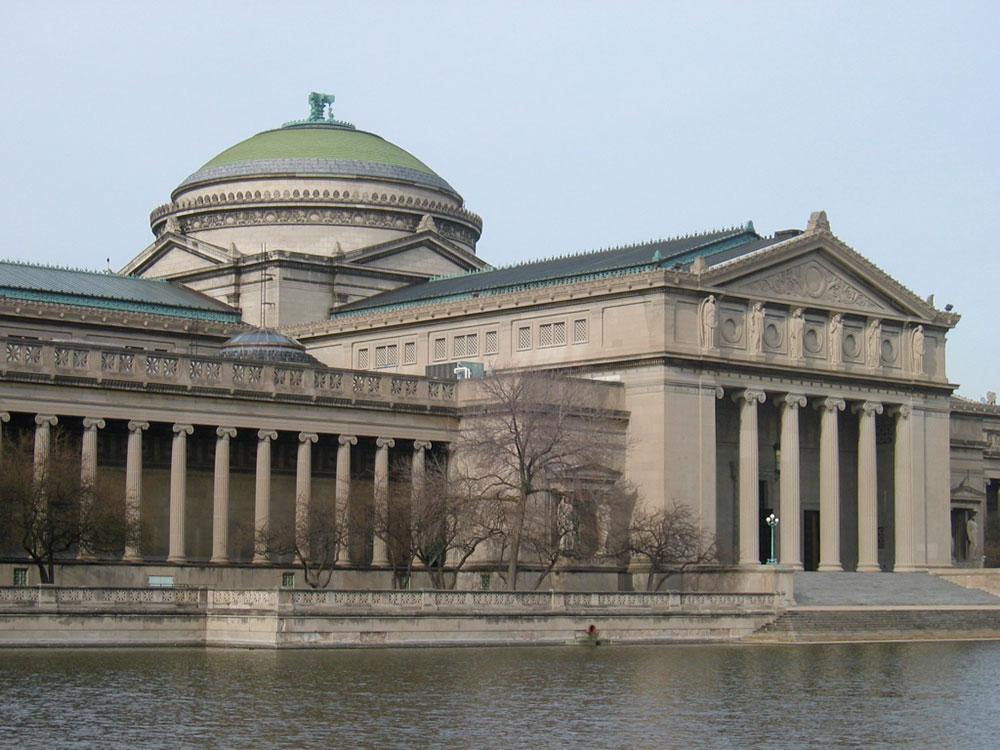Science museum featuring over 2,000 exhibits, displayed in 75 major halls
General Information
How to Get There
Overview
The Museum of Science and Industry (MSI) is a science museum located in Chicago, in Jackson Park, in the Hyde Park neighborhood between Lake Michigan and The University of Chicago. It opened in 1933 during the Century of Progress Exposition.
Among the museum's exhibits are a full-size replica coal mine, German submarine U-505 captured during World War II, a 3,500-square-foot (330 m2) model railroad, the command module of Apollo 8, and the first diesel-powered streamlined stainless-steel passenger train (Pioneer Zephyr).
The museum has over 2,000 exhibits, displayed in 75 major halls.
The first diesel-powered, streamlined stainless-steel train, the Pioneer Zephyr, is on permanent display in the Great Hall, renamed the Entry Hall in 2008. The train was once displayed outdoors, but it was restored and placed in the former Great Hall during the construction of the museum's underground parking lot.
German submarine U-505 is one of just six German submarines captured by the Allies during World War II, and, since its arrival in 1954, the only one on display in the Western Hemisphere, as well as the only one in the United States. The U-boat was newly restored beginning in 2004 after 50 years of being displayed outdoors, and was then moved indoors as "The New U-505 Experience" on June 5, 2005. Displayed in an underground shed, it remains as a popular exhibit for visitors, as well as a memorial to all the casualties of the Battle of the Atlantic during World War II.
MSI's Henry Crown Space Center includes the Apollo 8 spacecraft, which flew the first mission beyond low earth orbit to the Moon, enabling its crew, Frank Borman, James Lovell and William Anders, to become the first human beings to see the Earth as a whole, as well as becoming the first to view the Moon up close (as well as the first to view its far side). Other exhibits include Scott Carpenter's Mercury-Atlas 7 spacecraft and a lunar module trainer.
The "FarmTech" exhibit showcases modern agricultural techniques and how farmers use modern technology like GPS systems to improve work on the farm, and includes a tractor and a combine harvester from John Deere. The exhibit also showcases a greenhouse, a mock up of a kitchen showcasing much the foods we eat is soybean, and how we use cows, from energy to what we drink.
A transportation gallery is located on the museum's west wing, containing models of "Ships Through the Ages" and several historic racing cars.
"Future Energy Chicago" shows alternative resources, housing developments, and the future of Chicago.
Numbers in Nature: A Mirror Maze contains an interactive theater and stations to learn about patterns in nature, including the Golden Ratio, spirals, fractal branching, and Voronoi patterns.
The Transportation Zone contains several permanent exhibits.
The Great Train Story is a 3,500-square-foot (330 m2) HO-scale model railroad and recounts the story of transportation from Chicago to Seattle.
The museum includes a replica of Stephenson's Rocket, which was the first steam locomotive to exceed 25 miles per hour.
A replica of the Wright Brothers first airplane, the Wright Flyer, is on display.
Two World War II warplanes are also exhibited. Both were donated by the British government: a German Ju 87 R-2/Trop. Stuka divebomber—one of only two intact Stukas left in the world—and a British Supermarine Spitfire. Also on display is the museum's Travel Air Type R Mystery Ship, nicknamed "Texaco 13", which set many world records in flying.
"Take Flight" features the first Boeing 727 jet plane in commercial service, donated by United Airlines, with one wing removed and holes cut on the fuselage to facilitate visitor access.
In March 2010, the museum opened "Science Storms" in the Allstate Court, as a permanent exhibit. This multilevel exhibit features a 40-foot (12 m) water vapor tornado, tsunami tank, Tesla coil, heliostat system, and a Wimshurst machine built by James Wimshurst in the late 19th century. Also housed are Newton's Cradle, the color spectrum, and Foucault pendulum. All artifacts allow guests to explore the physics and chemistry of the natural world.
In keeping with Rosenwald's vision, many of the exhibits are interactive. "Genetics: Decoding Life", looks at how genetics affect human and animal development as well as containing a chick hatchery composed of an incubator where baby chickens hatch from their eggs and a chick pen for those that have already hatched, as well as housing genetically modified frogs, mice, and drought resistant plants.
"ToyMaker 3000", is a working assembly line which lets visitors order a toy top and watch as it is made. The interactive "Fab Lab MSI" is intended as an interactive lab where members can "build anything".
The "Coal Mine" re-creates a working deep-shaft, bituminous coal mine inside the museum's Central Pavilion, using original equipment from Old Ben #17, circa 1933. It is one of the oldest exhibits at the museum. In this unique exhibit, visitors go underground and ride a mine train to different parts of the mine and learn the basics of its operation.
"Yesterday's Main Street" is a mock-up of a Chicago street from the early 20th century, complete with a cobblestone roadway, old-fashioned light fixtures, fire hydrants, and several shops, including the precursors to several Chicago-based businesses.
In spring 2013, the "Art of the Bicycle" exhibit opened, showcasing the history of the bicycle and how modern bikes continue to evolve.
"Reusable City" focuses on recycling and other methods that could cut down harmful pollution and especially climate change and the Regenstein Hall of Science, containing a giant periodic table of the elements. Other main level exhibits include: "Fast Forward", which features some aspects of how technology will change in the future; "Earth Revealed", featuring a "Science on a Sphere" holographic globe; and a "Whispering Gallery".
"YOU! the Experience" includes a 13-foot-tall (4.0 m), interactive, 3D heart. Also well known are the "Body Slices" (two cadavers exhibited in 1/2-inch-thick (13 mm) slices) in the exhibit.
Several US Navy warship models are also on display in the museum, and flight simulators including of the new F-35 Lightning II are featured.
This article uses material from the Wikipedia article "Museum of Science and Industry (Chicago)", which is released under the Creative Commons Attribution-Share-Alike License 3.0

_2-1000.jpg)
